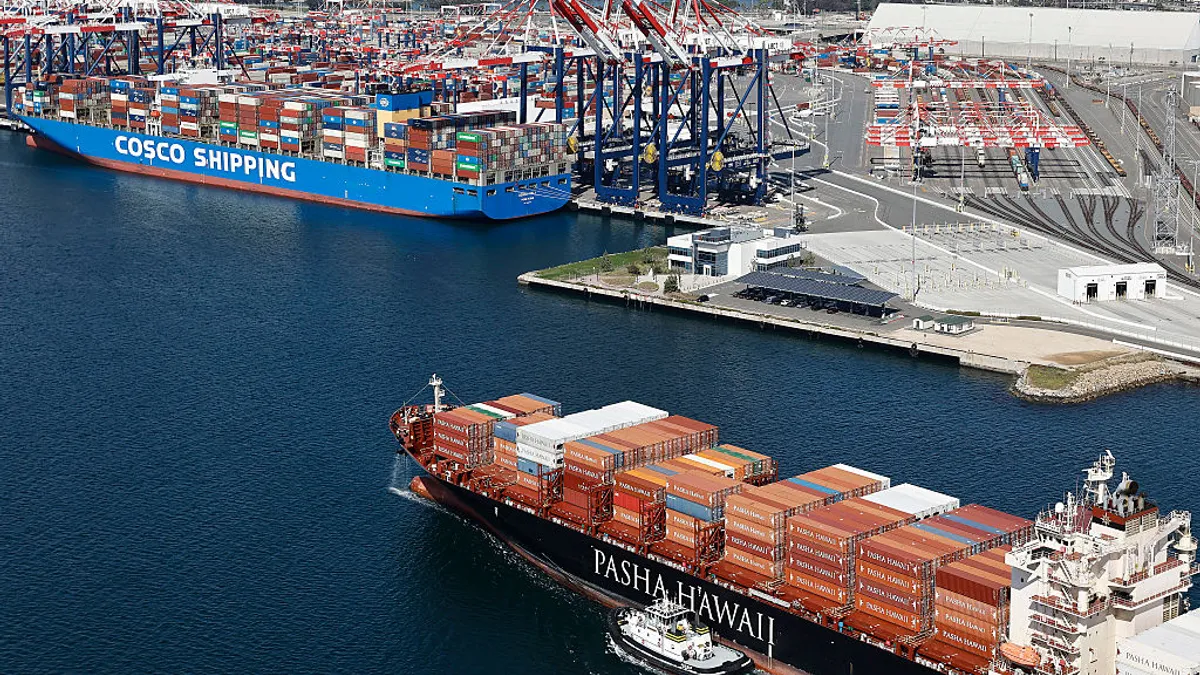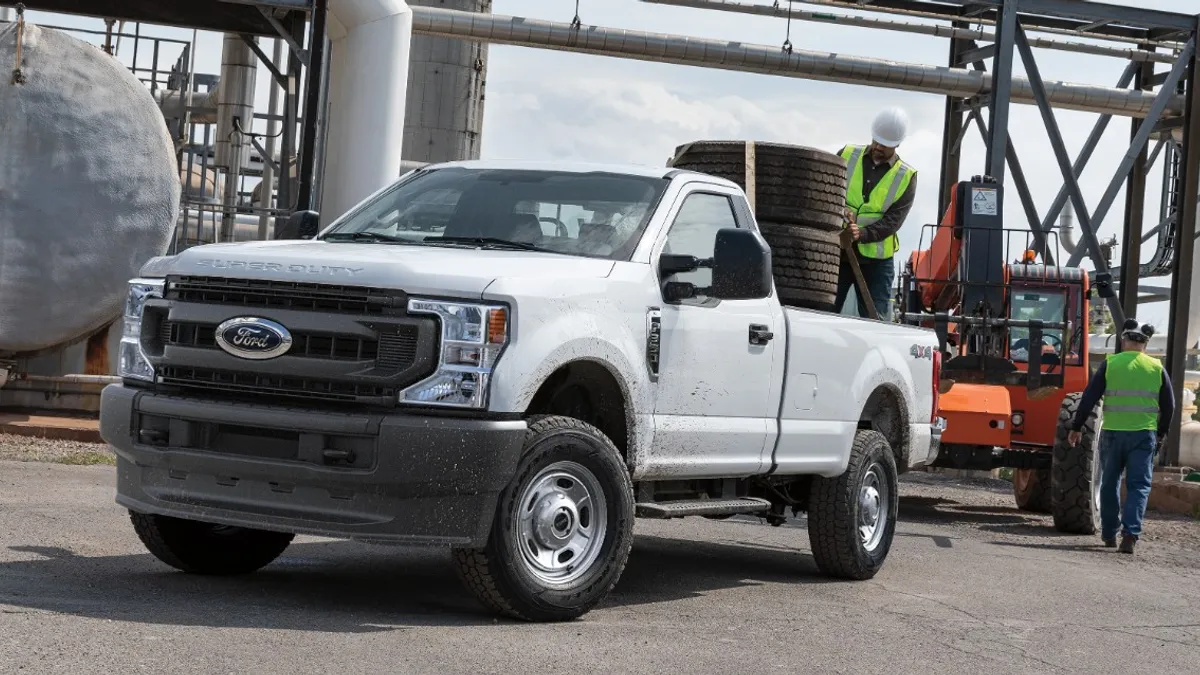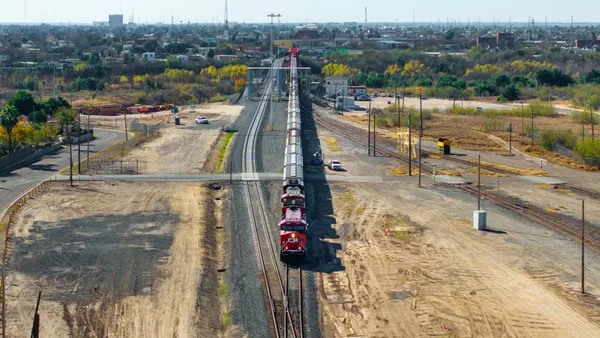Many China-linked ships arriving at U.S. ports could be subject to a new set of fees as early as mid-October, the Office of the U.S. Trade Representative revealed Thursday.
The new policy specifically targets ships built in China, and those owned or operated by any entity with ties to the country. The fees, which vary from $18 per net ton to $120 per container, will first be charged Oct. 14, and rise every subsequent April. Some exceptions apply, such as for ships transporting U.S. government cargo.
The decision is the result of a year-long Section 301 investigation on China’s role in the logistics, maritime and shipbuilding sectors, and is a significant revision from an earlier, controversial proposal. The USTR said nearly 600 public comments and feedback on its proposal pushed it to delay implementation and nix some of its original plans. But, ultimately, the agency decided action was needed this year, according to a press release.
“These actions balance the need for action and the importance of limiting disruption for U.S. exporters,” the press release reads.
The web of fees on China-linked ships also builds on an executive order, signed last week, to boost the United States’ role in ocean shipping. The USTR decision will further incentivize domestic shipbuilding by allowing vessel owners an up-to-three-year exemption from the fees if they order a new U.S.-built vessel.
"Ships and shipping are vital to American economic security and the free flow of commerce," Ambassador Jamieson Greer, the U.S. Trade Representative, said in a statement. "The Trump administration’s actions will begin to reverse Chinese dominance, address threats to the U.S. supply chain, and send a demand signal for U.S.-built ships."
However, trade groups representing importers fear the plan will raise ocean rates and disrupt supply chains.
“When ocean carriers raise rates, American families will pay the price through higher costs and growing product shortages, at a time when they can least afford it,” Nate Herman, SVP of policy at the American Apparel & Footwear Association, said in a statement, adding later: "We fully support strengthening the U.S. maritime industry, but penalizing shippers for not using American-flagged or built vessels, when they cost up to five times more and remain in limited supply, is counterproductive.”
Meanwhile, maritime analysts predict the policy could lead major ocean carriers to alter their networks.
“This is likely to cause a network adjustment in Ocean Alliance such that CMA CGM and Evergreen will be operating US-bound services as much as possible,” Lars Jensen, CEO of Vespucci Maritime, said in a LinkedIn post. “Other carriers will shuffle vessels where possible to have Chinese ships in other trades.”
COSCO Shipping and OOCL, shipping lines based in Shanghai and Hong Kong, will be hit the hardest, he added, noting some of their larger ships could face fees of up to $8.4 million under the new policy.
However, the policy’s impacts could also heavily affect non-China-based companies. China-built ships made up 19% of the vessels arriving at U.S. ports in February, according to an Alphaliner analysis of 1,002 port calls.
The new disincentives for transporting products on China-linked ships come as the U.S. wages a broader trade war with China and ramps up its use of tariffs on specific industries. Since January, President Donald Trump has used emergency powers to enact a minimum 145% tariff on many goods from China, and used national security investigations to enact a 25% tariff on foreign-built automobiles.
The USTR’s new plan follows suit there, too. The agency is considering enacting additional tariffs on key logistics equipment, while putting broader restrictions on automobile and liquefied-natural gas transportation.
Specifically, the plan also includes:
- Additional tariffs on containers, chassis, chassis parts and ship-to-shore cranes, though that proposal is pending public comments
- A fee on any vehicle-carrying ships built outside of the U.S. — not just in China — of $150 per car-equivalent unit
- A requirement that liquefied natural gas must increasingly be exported on ships with clear U.S. ties, rising from a 1% requirement in 2028 to a 15% requirement in 2047
The fees are not cumulative: “If any fee is applied, only one fee will be applied under the terms of the respective Annex,” the federal register notice reads.














